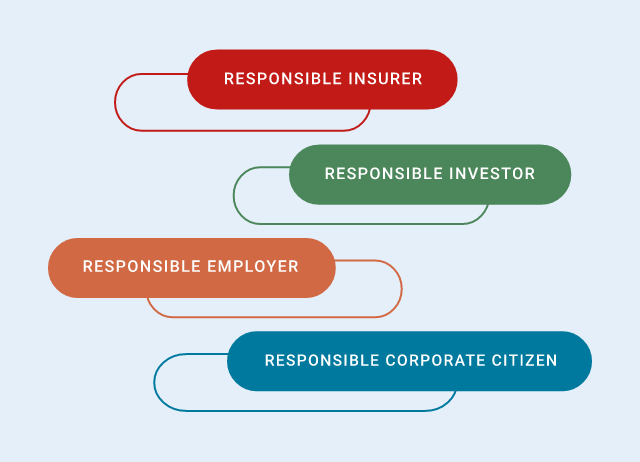Life insurance: protecting what matters most
Life insurance is a contract in which an insurance company agrees to pay a lump sum or an annuity when an event involving human life occurs - such as death or survival to a certain age - in exchange for a premium paid by the policyholder.

A life insurance agreement involves several key roles, which may be held by the same or different individuals:
- The policyholder, who signs the contract and pays the premium
- The insured party, whose life is covered by the policy
- The beneficiary, who receives the payment if the insured event occurs
Life insurance solutions can be grouped into two main categories:
- Pure-risk cover, which focuses solely on protection
- Investment policies, which combine protection with capital growth
Additionally, pension funds represent a distinct category of Life insurance aimed at long-term welfare and retirement planning. These are governed by national pension and welfare regulations and are designed to support financial security in later life.
Types of Life insurance solutions
Pure-risk life insurance provides financial protection through survival, death, or mixed benefits, ensuring coverage based on specific life events.
Discover more
Pension funds are designed to provide a supplementary retirement income, in addition to the pension granted by public social security systems.
Discover more
Investment-linked life insurance policies combine protection with a financial component.
Discover more
Before taking out a Life insurance policy
Before choosing a Life insurance policy, it’s important to understand the key elements involved and evaluate whether the product aligns with one’s financial goals and personal circumstances. Here are the main aspects to consider:
Contracting parties
A life insurance policy involves three roles, which may be held by the same or different individuals: the policyholder, the insured party, and the beneficiary.
Costs and loadings
The premium paid by the policyholder includes not only the cost of risk coverage but also loading costs, which cover the acquisition and administrative expenses of the policy.
Time restrictions
Life insurance is a long-term commitment. Unlike standard financial investments, it may not be possible to withdraw funds at any time. Some policies impose lock-in periods or penalties for early termination. Always review these conditions carefully.
Investment risks
Some Life insurance products involve financial investments. The value of the policy may fluctuate based on market performance. It’s essential to assess your risk tolerance before choosing such products.
Guarantees
Certain policies may offer guarantees - such as a minimum return rate or capital protection. Optional add-ons may also be available for enhanced coverage. Be sure to evaluate their relevance and understand any additional costs involved.
After-sales assistance
A Life insurance policy is a long-term relationship. Agents should provide ongoing support, not just during the sale but throughout the life of the policy. Don’t hesitate to ask questions or request clarifications at any time.
Tax benefits
Life insurance policies often come with fiscal advantages. These can be an important factor in evaluating the overall value of the product.
Succession rules
Life insurance policies are treated differently from other assets in inheritance matters. For example, the designation of a beneficiary may override standard inheritance laws.






